 Over the past few months or I’ve followed the efforts of Dale Linegar and Stefan Schutt in establishing what is now known as The Lab.
Over the past few months or I’ve followed the efforts of Dale Linegar and Stefan Schutt in establishing what is now known as The Lab.
Melbourne-based and dedicated to providing support and skills to 10-16 year olds with Asperger’s Syndrome, The Lab is already showing some great results.
It’s one of those initiatives that deserves much more kudos and funding than it is currently receiving. You’ll understand why after reading the interview I conducted with the Lab’s co-founders.
David: First, a little about The Lab team. Can you give a snapshot of your backgrounds?
Stefan: For the last seven years I’ve been an educator and researcher at Victoria University, working with technology and young people and teaching multimedia. Before this I worked in the Internet industry during and after the dot com boom as a content editor, producer, web developer and interaction designer. I also set up Australia’s first Computer Clubhouse, a tech skills club for underprivileged kids in Fitzroy based on the model established by the MIT Media Lab in Boston. Before all this, I worked as a writer and played in bands.
Dale: I started working with Stefan at Victoria University (VU) in 2007, teaching in Creative Industries. He had a lot of faith in the virtual worlds work I was doing then, and we have collaborated on at least half a dozen projects together since. We work well together, our skills complement each other. I run a business called Oztron, which does work for VU, Monash School of Pharmacy, and a range of other clients – most involving research and education in virtual worlds.
David: So what specifically has let you to working in this area?
Stefan: We had taught multimedia students with Asperger’s at VU and they seemed to particularly enjoy working with technology, especially the virtual worlds activities Dale was running. This led to a trial with two teenagers in Gippsland funded by Optus Communities. The results were promising and from this we applied to VicHealth for a one-on-one research project to pilot different kinds of technologies with young people with disabilities and other disadvantages. This project found that one-on-one technical tutoring seemed to work particularly well with kids with Asperger’s, and this led to the setting up of The Lab.
Dale: I think after that there were a few factors involved with us deciding to give this a go. We had established through those projects that this approach could work, and that there was a need for it. Once you reach this stage you can either publish and hope that somebody will eventually read what you write and take action, or you can give it a go yourself. The amount of money involved wasn’t huge so we decided to do it ourselves. At this time I was also meeting one young boy with Asperger’s and his mother for regular mentoring at McDonalds, we initally started at the library but were told we were making too much noise. This wasn’t ideal, and it required a lot of travel time to deal with one person.
All of this coincided with my business needing a physical location to work on a few larger contracts. This has provided us with the space, the technology and the human resources required to run The Lab.
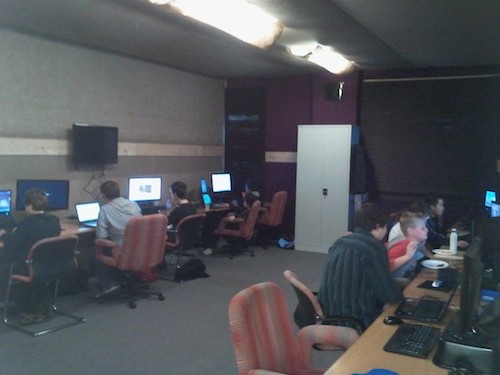
David: For those not in the know, how prevalent is Asperger’s amongst the teen population?
Stefan: For Autism Spectrum Disorders (ASD) in general (which includes Asperger’s Syndrome), estimates for Victoria ranged in 2006 from 27 per 10 000 to 54 per 10 000. The prevalence appears to be increasing rapidly and there is debate about whether this is due to increased rates of diagnosis or increasing numbers of people with ASD.
David: Onto The Lab: it’s only just really started in earnest, what’s the journey been like to get to this stage?
Dale: Fascinating and rewarding. It’s a simple idea but when you see the immediate impact it has on both the children and their parents it’s incredibly satisfying. The process actually started with myself and Stefan walking around Footscray knocking on doors asking about vacant office and retail spaces. After a few hours we had found a suitable space, and once it becomes real like that, it takes on a life of its own. It took around 5 months from that day until we opened the doors for kids.
Some simple tasks have turned out to be a nightmare, like getting connected to the internet, and other things which initially seemed complex, like getting somebody who could work with the parents on board, involving our technology mentors, and attracting the right young people, have worked out better than we dared imagine. The physical space The Lab is in is also Oztron’s office, and it has been designed to encourage collaboration. The kids are very comfortable there – it feels more like some kind of gaming den than an office or school.
Stefan’s role at Victoria University and our previous project work means that we have a wide support network, and we have drawn on that throughout the process for advice and support in the many areas we lack knowledge in.
David: So who is funding The Lab at present and is the funding relatively secure?
Stefan: The Lab is currently unfunded, or more accurately, indirectly funded through the virtual world software development projects Dale runs for a range of organisations, as well as small amounts of left over funding from previous VU projects. Funding may be forthcoming later in the year via a Cooperative Research Centre in youth, technology and wellbeing run by the Inspire Foundation that we’re part of – but this is yet to be fully discussed with the CRC. Until then, we’re looking for other funding sources.
David: What is the scope of activities The Lab is involved in?
Dale: We currently run one session a week for 3 hours for 8 kids, and more sessions during holidays for a wider audience. What we try to do is provide as many different technology platforms as possible for the young people, which they can use to explore their own interests. Our aim is not to lead the students, but to support them and encourage collaboration. We provide students with a laptop stand, keyboard, mouse, second monitor, and network connection. We have a local server which is currently running Minecraft and allows filesharing – the kids can also log into this and play together from home. Once the kids come in it’s a case of – ‘What do you want to do?’
One of the hit pieces of software so far has been Minecraft, and this has ended up serving as a social and creative outlet for the kids. For young people who need to learn about social interaction, this has been great, they need to co-operate and respect each others’ territory. Last week we introduced an Arduino, an open-source electronic hardware and software kit comprising of a circuit board that can be programmed to do specific things, starting with simple things like making flashing lights and musical instruments and going up to projects like complex sensor-based triggering and robots with avoidance detection. The Arduino proved to be very popular, and we have now ordered a few more kits. It’s a great way to introduce kids to programming because the payoff is immediate and satisfying.
We also have a separate room where Stefan and Trish (our parent co-ordinator) hold an informal gathering for the parents each week. This gives both the kids and parents a bit of personal space. They can chat about issues they are having over a cup of tea, and discuss possible avenues of support. Trish has just organised for a psychologist to attend every fortnight, and we also have other experts with an interest in the field dropping by to offer assistance.
David: You use OpenSim, Spore and Minecraft to name three virtual environments. Let’s talk OpenSim first: has it primarily been a cost issue that’s led to its use versus say Second Life, or has there been other advantages to OpenSim?
Dale: As a business we use Opensim for nearly all of our work at the moment including Pharmatopia for Monash and a construction world for Victoria University. Second Life doesn’t provide a space where where we have total control, and people of all ages can interact, so as educators we were forced to make the switch a couple of years ago now. Like many people out there I personally have a love/hate relationship with Second Life – I love the possibilities it has created, but I have issues with the way it has been managed and promoted.
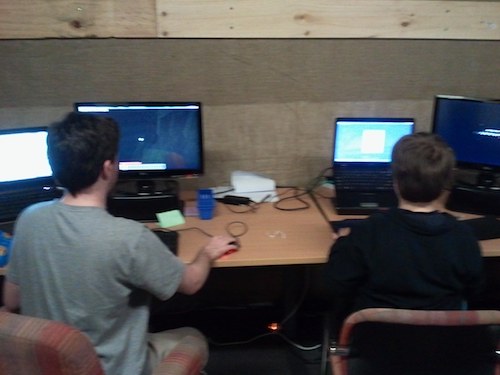
David: So what exactly are you doing in OpenSim?
Dale: We haven’t really introduced it to the wider group at The Lab because we are waiting for that opportunity to present itself, it’s up to the kids. We will run our own Opensim world which will be available to the group only – the plan is to create 8 islands and the rest is up to them. Many of the young people with Asperger’s we have worked with over the past couple of years continue to use Second Life. One young lady is using Second Life to bring her characters to life. She has written an amazing story about a group of female superheroes, and drawn pictures, and is now using the virtual world to bring her characters into the third dimension.
Another young man we work with has his dream house in Second Life and is constantly renovating, he lives in rural Victoria so for him it’s a great escape. We have also used Comic Life quite a bit in the past and will probably introduce this to interested Lab participants at some stage.
David: A common criticism of OpenSim (and Second Life) is the initial learning curve: has that been a greater or lesser issue with the teens you’ve been working with?
Stefan: Yes and no. What surprised us in our last project is how much Second Life and OpenSim rely on text-based navigation. We’d always thought of them as visual interfaces until then, but as we found out when working with kids with very low literacy levels, so much of the navigation is achieved by typing in text, which can cause issues for some kids. For others, they’ve taken to it like ducks to water, especially the younger ones. We also wonder whether the ‘learning curve’ referred to is related only to the ‘end user’ or also the people running the activity (ie teachers and managers) – this is where a lot of the problems seem to arise in terms of access, web speeds, and associated lag, plus generational issues like people not used to navigating in 3d or navigating via arrow keys like, erm, me. I always get Dale to do the practical demos because I’m so unskilled at it!
David: Now onto Spore: how are you using it?
Dale: We only use the free creature creator, firstly because it’s free, and secondly because it’s all about being creative. It’s a great icebreaker, many of the young kids we work with have already played it, and it acts as a catalyst for communication. It also gets kids into a more creative frame of mind, to feel the pleasure of making something as opposed to getting stuck competing in other games.
David: And Minecraft?
Dale: It can appear to an outsider as one of those ‘click-click-click’ games but when the kids are playing on a server together it allow for some wonderful creativity and encourages communication and collaboration. One of our mentors has built his own computer in it and knows it backwards, and the kids respect this.
David: Has Minecraft been a bit of a revelation for the work you are doing? It sort of came out of nowhere and has caught on quickly.
Dale: It has been surprising how many of the kids enjoy it, I think every one of them has played it at some stage now, and there are regularly 5 or 6 of the kids on the server during our sessions. There is a lot to learn, so I see it as the group exploring a new territory together – in this case a virtual one. They feed off each other and go on journeys, learning things they might not learn alone.
David: Talking more broadly again now, what are the individual benefits and outcomes you’ve seen so far amongst the participants?
Stefan: One big factor so far seems to be the environment of The Lab – i.e. a space where young people with Asperger’s are not picked on (unlike school, where bullying is constant), where they’re accepted and where being a ‘geek’ is even cool, and where they are surrounded by other people like them – both other kids and the programmers who are a kind of role model. Also, where their parents aren’t hovering the whole time! They’re relaxed because they’re not pushed to do anything, or to interact if they don’t want to. They can sit happily at the screen without being bugged – but the expert advice is on hand whenever they request it.
Having said that though, the level of kid-to-kid interaction to date has been quite amazing – here we’re talking about kids who don’t have any friends at all in the outside world, but who are happily chatting away and playing with others, both in-world and in the physical space.
Another factor is the technology itself, and the presence of experts to whom they can look up and respect (they usually run rings around other adults when it comes to IT). Tied to this is the sense of possible future careers, and a way into the future. This is very powerful – already we’ve heard reports of one parent halving her child’s anxiety medication dose due to his reduced anxiety levels about his future.
David: Let’s talk research: is there an underlying research methodology being used for The Lab?
Stefan: We would classify our approach as ‘participatory action research’ – our focus is on hands-on outcomes driven by all stakeholders in collaboration, and implemented (and continuously improved) by all involved. It’s based on making a real difference to real people’s lives rather than sitting back as the researchers in the white coats. It’s proudly interventionist and practical, and has a strong element of social activism.
David: Are there specific research projects underway and if so can you give a brief overview of any?
Dale: The Lab is it! We may choose to work with others in the future to measure outcomes empirically – especially researchers who are experts in ASD (which we’re not)
David: What are the measures of success for you with The Lab?
Stefan: In the short term, happier kids, happier families, and a sense of progress amongst participants. We rely heavily on feedback from the kids and the parents. It will always be tough to measure our impact in a quantitative way as each of these young kids is so unique and we are only dealing with small numbers. It’s not like we can create a control group. But we are looking to work with experts in the Autism field who may be able to measure the effects on individuals and their families over time – this is where the Cooperative Research Centre, and its 70 or so partner organisations, will hopefully come in.
David: Are there any qualitative or quantitative outcomes you’re able to see already?
Stefan: Yes. We’ve already had remarkable email and verbal feedback from participants’ parents about their children’s improvement, only three weeks into the beginning of the program. We also have 20 plus kids on our waiting list. Other parents have been ringing us daily after finding out about The Lab. It seems to have really hit a nerve. As stated previously, we’d like to get other measures too, working with field experts.
David: Given the central use of virtual environments in the program, are there any plans to expand the program geographically?
Stefan: Currently The Lab has three interlocking elements that work together: participant socialisation, technical tuition and parental networking/support. Any of those three elements would be useful in themselves (for instance, we’re arranging for a software engineer to undertake private volunteer programming tuition with one of the kids on our waiting list), but the combination of the three is especially powerful. So we could run virtual programs, and they could be useful, but some of those three elements might be missed.
Dale: My feeling is that having personal contact is still important in modern society, in this case for both the kids and their parents. We hope to build online resources which can help people at home, but nothing beats a one-to-one conversation with somebody who knows what they are talking about. I hope that we can inspire other real-world institutions to become involved.
David: Getting out the crystal ball now: what are you hoping The Lab has achieved a year from now?
Stefan: What we are striving for is an effective model that can be replicated in other places and can positively influence the way society thinks about these kids, particularly in the education system which seems to be manifestly unsuited to a group of young people who are very talented.
Dale: Currently so many of the young people and their parents simply have nowhere to turn – they are stuck between normal schools and special schools, neither of which meet their needs. These people have a lot to offer to society – we deal with kids who can program their own games, but aren’t able to attend school and are at risk of being disadvantaged their entire lives. I hope that we can help support people and organisations who are interested in adopting this type of model, and I hope we can expand and deal with more kids more regularly. We live in an age where we have the opportunity to use technology to create positive social change, and we are enjoying every moment of it.
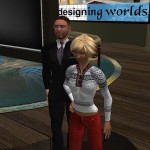
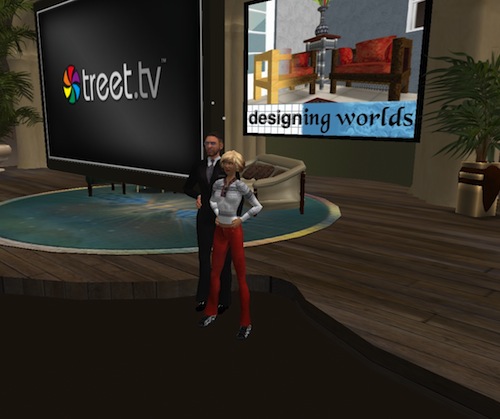


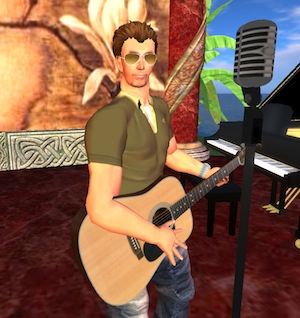
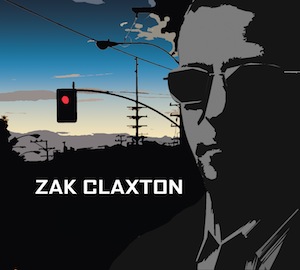 Zak: I tend to create music for the sake of the music, as opposed to ulterior motives like fame or fortune. I can say for sure that I still have a lot of music inside of me that has yet to emerge. I’ve begun writing songs for a second solo album, which I intend to start working on in early 2010. But on an immediate basis, my self-titled debut album is just coming out now, so I have some stuff to do to help promote it. In that regard, I will be doing some live shows in real life, and we’re making an effort to get terrestrial radio airplay here in the USA in addition to the Internet radio play we get on stations like IndieSpectrum Radio and SL Live Radio. While I’m not fooling myself into thinking my album will be some massive pop hit, I still want to do the things that will at least give it a chance to get heard, so the current focus is in that regard. I’m working closely with Kat on this stuff, since we’re partnering in a record label called Frothy Music to do the release of my album.
Zak: I tend to create music for the sake of the music, as opposed to ulterior motives like fame or fortune. I can say for sure that I still have a lot of music inside of me that has yet to emerge. I’ve begun writing songs for a second solo album, which I intend to start working on in early 2010. But on an immediate basis, my self-titled debut album is just coming out now, so I have some stuff to do to help promote it. In that regard, I will be doing some live shows in real life, and we’re making an effort to get terrestrial radio airplay here in the USA in addition to the Internet radio play we get on stations like IndieSpectrum Radio and SL Live Radio. While I’m not fooling myself into thinking my album will be some massive pop hit, I still want to do the things that will at least give it a chance to get heard, so the current focus is in that regard. I’m working closely with Kat on this stuff, since we’re partnering in a record label called Frothy Music to do the release of my album. Zak: Lots and lots of mistakes to avoid. First and foremost, check your ego at the door, as Quincy Jones once famously said. I’ve seen a number of musicians come into SL thinking they should be the hot ticket from day one, since they have a bit of real life experience as a musician. But as I mentioned earlier, there’s actually a pretty deep talent pool in SL, and like any music scene you’re trying to break into, you have some dues to pay in terms of getting recognized.
Zak: Lots and lots of mistakes to avoid. First and foremost, check your ego at the door, as Quincy Jones once famously said. I’ve seen a number of musicians come into SL thinking they should be the hot ticket from day one, since they have a bit of real life experience as a musician. But as I mentioned earlier, there’s actually a pretty deep talent pool in SL, and like any music scene you’re trying to break into, you have some dues to pay in terms of getting recognized.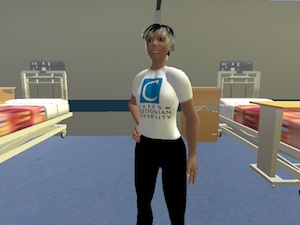 (This story appeared earlier today over at
(This story appeared earlier today over at 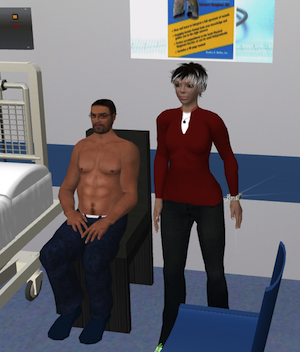 Kali: Constructivism and social constructivism are the key learning theories in my work. By linking history and heart and lung sounds to other parts of a clinical scenario, I am building on the students previous knowledge to create new knowledge. People in simulations tend to act the same as they do in real life. The ability to capture the text allows for reflection on the decision-making of this particular group.
Kali: Constructivism and social constructivism are the key learning theories in my work. By linking history and heart and lung sounds to other parts of a clinical scenario, I am building on the students previous knowledge to create new knowledge. People in simulations tend to act the same as they do in real life. The ability to capture the text allows for reflection on the decision-making of this particular group.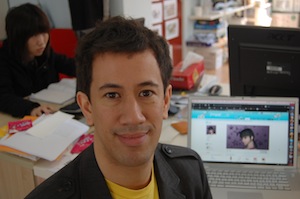 Back in May,
Back in May, 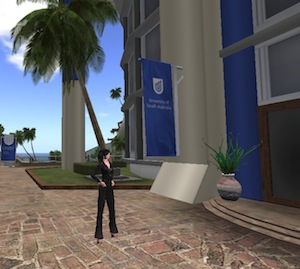
 Denlee: Actually it was the reverse. Some saw it as inappropriate because it was too much like play – almost as if they had preconceived ideas about what is a valid or authentic learning environment.
Denlee: Actually it was the reverse. Some saw it as inappropriate because it was too much like play – almost as if they had preconceived ideas about what is a valid or authentic learning environment.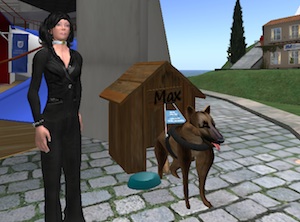 Denlee: We will no doubt continue to maintain our UniSA island here – we are planning to trial using our island to facilitate career building – running careers fairs and so on. We are also undertaking research in the area of performing arts and hybrid performance. Intermediality – where actors on a “real life†stage perform with actors in SL.
Denlee: We will no doubt continue to maintain our UniSA island here – we are planning to trial using our island to facilitate career building – running careers fairs and so on. We are also undertaking research in the area of performing arts and hybrid performance. Intermediality – where actors on a “real life†stage perform with actors in SL.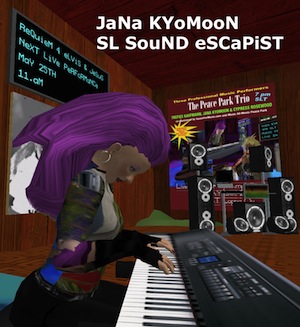 JaNa KYoMooN, the avatar used by Jan Pulsford, is a musician I’ve known since the late 90s when we were both involved with online music collaboration via the now defunct
JaNa KYoMooN, the avatar used by Jan Pulsford, is a musician I’ve known since the late 90s when we were both involved with online music collaboration via the now defunct  JaNa: My fascination with music technology and computers started back in the days of the Oberheim System and continued through C-lab’s Notator on an Atari to working with Logic Audio on the Mac. I became a beta tester for Logic Audio’s Rocket Network, a global network of pioneers of on line collaboration and today I continue to develop that spirit in the 3D virtual world of Second Life where I perform as a solo virtual artist mixing electronica with ambient improvisations and rhythmic reflections.
JaNa: My fascination with music technology and computers started back in the days of the Oberheim System and continued through C-lab’s Notator on an Atari to working with Logic Audio on the Mac. I became a beta tester for Logic Audio’s Rocket Network, a global network of pioneers of on line collaboration and today I continue to develop that spirit in the 3D virtual world of Second Life where I perform as a solo virtual artist mixing electronica with ambient improvisations and rhythmic reflections.  JaNa: They come and go but so many to choose from! The Music ALL Music Peace Park of course! The Pyramid art gallery and Club Ethereal run by Torben Asp and Jess Oranos. The Bluff Arts Center with ZeroOne Paz, Gaia Island with Enchantress Sao, Anthology with Trella Mohan, Dragonfly Reign with Magnolia Anthony and Broody Flow, Firehouse with Trowser Boa and Sugar Hill Island with Marjorie Dibou. The list goes on . . . . and on
JaNa: They come and go but so many to choose from! The Music ALL Music Peace Park of course! The Pyramid art gallery and Club Ethereal run by Torben Asp and Jess Oranos. The Bluff Arts Center with ZeroOne Paz, Gaia Island with Enchantress Sao, Anthology with Trella Mohan, Dragonfly Reign with Magnolia Anthony and Broody Flow, Firehouse with Trowser Boa and Sugar Hill Island with Marjorie Dibou. The list goes on . . . . and on
 Kyle: We had hoped the AWG group in SecondLife would mature as a basis for interop. Why not start with your most compatible world after all? But they are not keeping up with the speed of the Opensim dev’s with items like Hypergrid now linking any Opensim world. So since we cannot get hands on to help there on the SecondLife side we have decided to experiment with our own interop focusing on the access we now haveto the worlds core database store. We can get to the data now so anything becomes possible.
Kyle: We had hoped the AWG group in SecondLife would mature as a basis for interop. Why not start with your most compatible world after all? But they are not keeping up with the speed of the Opensim dev’s with items like Hypergrid now linking any Opensim world. So since we cannot get hands on to help there on the SecondLife side we have decided to experiment with our own interop focusing on the access we now haveto the worlds core database store. We can get to the data now so anything becomes possible.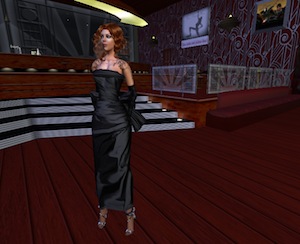 Last week I received an email from NSW-based Second Life resident chryblnd Scribe, who is a Burlesque performer. It’s an art that suffers from lots of misconceptions – it’s worth reading
Last week I received an email from NSW-based Second Life resident chryblnd Scribe, who is a Burlesque performer. It’s an art that suffers from lots of misconceptions – it’s worth reading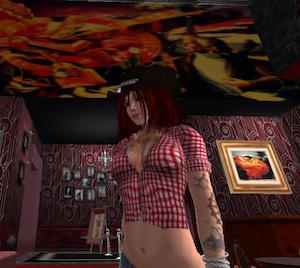 Lowell Cremorne: What is the gender split of your audiences usually?
Lowell Cremorne: What is the gender split of your audiences usually?
Recent Comments